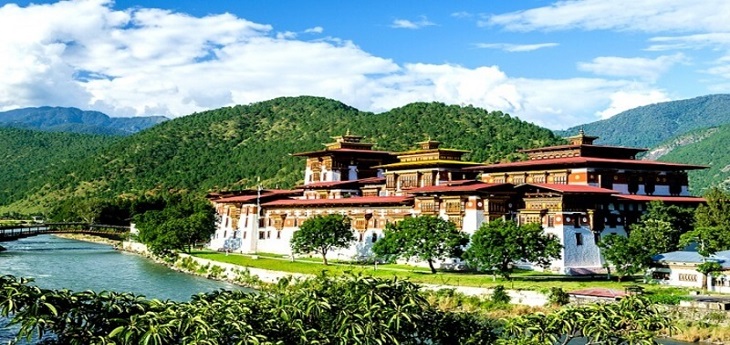Bhutan Destination
Home Bhutan Destination
Home Bhutan Destination

Bhutan, a Buddhist kingdom on the Himalayas’ eastern edge, is known for its monasteries, fortresses (or dzongs) and dramatic landscapes that range from subtropical plains to steep mountains and valleys. In the High Himalayas, peaks such as 7,326m Jomolhari are popular trekking destinations. Paro Taktsang monastery (also known as Tiger’s Nest) clings to cliffs above the forested Paro Valley.

It is perhaps the smallest capital in the world and is pure and ethnic gallery of traditional Bhutanese art, architecture, culture, and tradition, located across the western slopes of the Wang Chhu river valley. This is the center of Bhutan and the financial and tourism hub situated at an altitude of 2,320 meters, even a walk through Norzin Lam the main thoroughfare is worth. It is perhaps the only world capital without any traffic lights.

Paro is a name of the town center as well the name of district or Dzongkhag. The small and charming town of Paro lies in the center of the valley at an average elevation of 2280m, on the bank of Pa Chhu River. Paro town was first formed in 1985 with one main street, lined with colorfully painted shops. Of recent, new constructions have taken place at the back of the main street. The head quarter of Paro district is located in nearby Rinphung Dzong.

Phuntsholing, also spelled as Phuentsholing is a border town in southern Bhutan and is the administrative seat of Chukha District. The town occupies parts of both Phuentsholing Gewog and Sampheling Gewog. Phuentsholing adjoins the Indian town of Jaigaon, and cross-border trade has resulted in a thriving local economy. The town has the headquarters of the Bank of Bhutan previously but shifted to Thimphu.

The town shares its name with the dzong built in 1638 that dominates the district. The name is said to have been given by Ngawang Namgyal, the 1st Zhabdrung Rinpoche, who was searching for the best location for a dzong to prevent incursions from the south. At the chosen spot, the Zhabdrung encountered a boy named Wangdi playing beside the river and hence named the dzong "Wangdi's Palace".

Trongsa which was built in 1644, used to be the seat of power of the Wangchuck dynasty before it became rulers of Bhutan in 1907. Traditionally the King of Bhutan first becomes the Trongsa Penlop (governor) before being named Crown Prince and eventually King. Built on a mountain spur high above the gorges of the Mangde Chhu, the dzongcontrolled east-west trade for centuries.